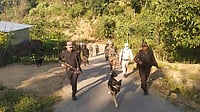The Indian Space Research Organisation (ISRO) on Friday said that efforts were made to establish communication with Chandyayaan 3's lander Vikram and rover Pragyan, but they have not received any signal from them yet. Initially it was reported by an official that the resurrection plan had been deferred to Saturday due to some undisclosed reasons.
Previously, Nilesh Desai, Director of Space Applications Centre,said "Earlier we planned to reactivate the (Pragyan) rover and (Vikram) lander on the evening of 22nd September, but due to some reasons we will now do it tomorrow on September 23."
After successfully conducting experiments on the lunar surface as long as the daytime persisted, the rover and the lander were put into sleep mode on September 2 and 4 respectively.
The solar panels incorporated in the system are primed to receive light at dawn, and the batteries, powered by sunlight, were left charged before the devices were put to sleep.
If the resurrection procedure turns out to be successful tomorrow, the mission will be granted an extended lease of life which will enable the scientists to acquire additional samples and continue their exploration of the lunar surface.
About the findings of Rover Pragyan
During their 14-day-long operational phase, the Vikram Lander and Pragyan rover executed numerous lunar experiments and exceeded the listed objectives by covering a distance of over 100 meters on the lunar surface. It confirmed the presence of Sulphur (S) in the lunar surface near the south pole.
The Vikram lander also conducted groundbreaking measurements of the near-surface lunar plasma environment over the south polar region.
It has been reported that ISRO had initially planned for the rover to cover a distance of 300-350 meters. However, due to certain reasons, the rover so far has only moved 105 meters.


























